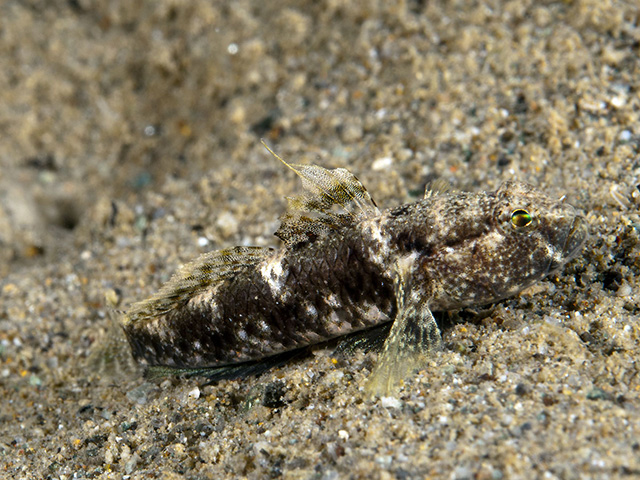|
Dorsal spines (total): 7-7; Dorsal soft rays (total): 9-10; Anal spines: 1-1; Anal soft rays: 8-8. Description: Eye 3.6 times in head length, equals snout; eyes high up, close together, covered by skin; several mucus canals along cheeks; front nostril small tube above lip, hinder a pore close before eye; mouth moderate, maxilla to below front of pupil, jaws subequal; in each jaw a band of small teeth, in lower outer series larger in front, in upper outer series larger, front teeth larger; tongue feebly bilobed (Ref. 404). Gill opening restricted, hardly surpass pectoral fin base; gill rakers 2+1+6, gill rakers moderate (Ref. 404). Dorsal fin with 7 spines and 9-10 soft rays; anal fin with 1 spine and 8 soft rays; pectoral fin with 17 rays; 2nd-5th dorsal spines subequal, little more than 1/2 of body depth, soft rays higher, subequal, 0.66-1.00 times body depth, anal slightly lower; pectoral fin rounded, to above vent; pelvic fin 1.2 times in head, fraenum strong, almost to vent; caudal fin rounded (Ref. 404). Scales on lateral line 36; transversal scales 12; scales ctenoid behind, become smaller and cycloid below 1st dorsal fin, on nape small, embedded, reach 2/3 to eyes; scales on belly, pectoral fin base and chest cycloid, head naked (Ref. 404). Colouration: Dusky yellowish, with dark marks (Ref. 404). |

